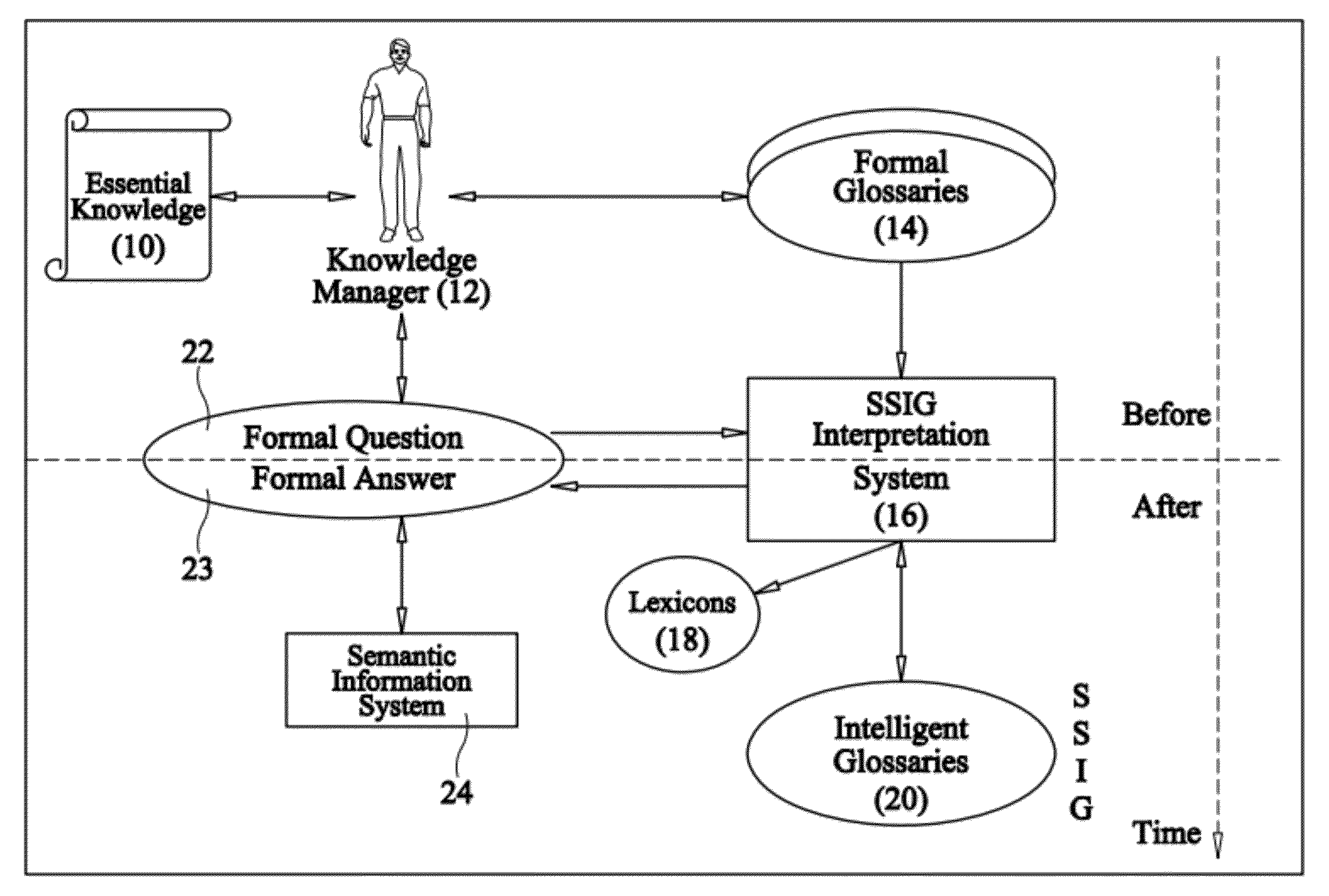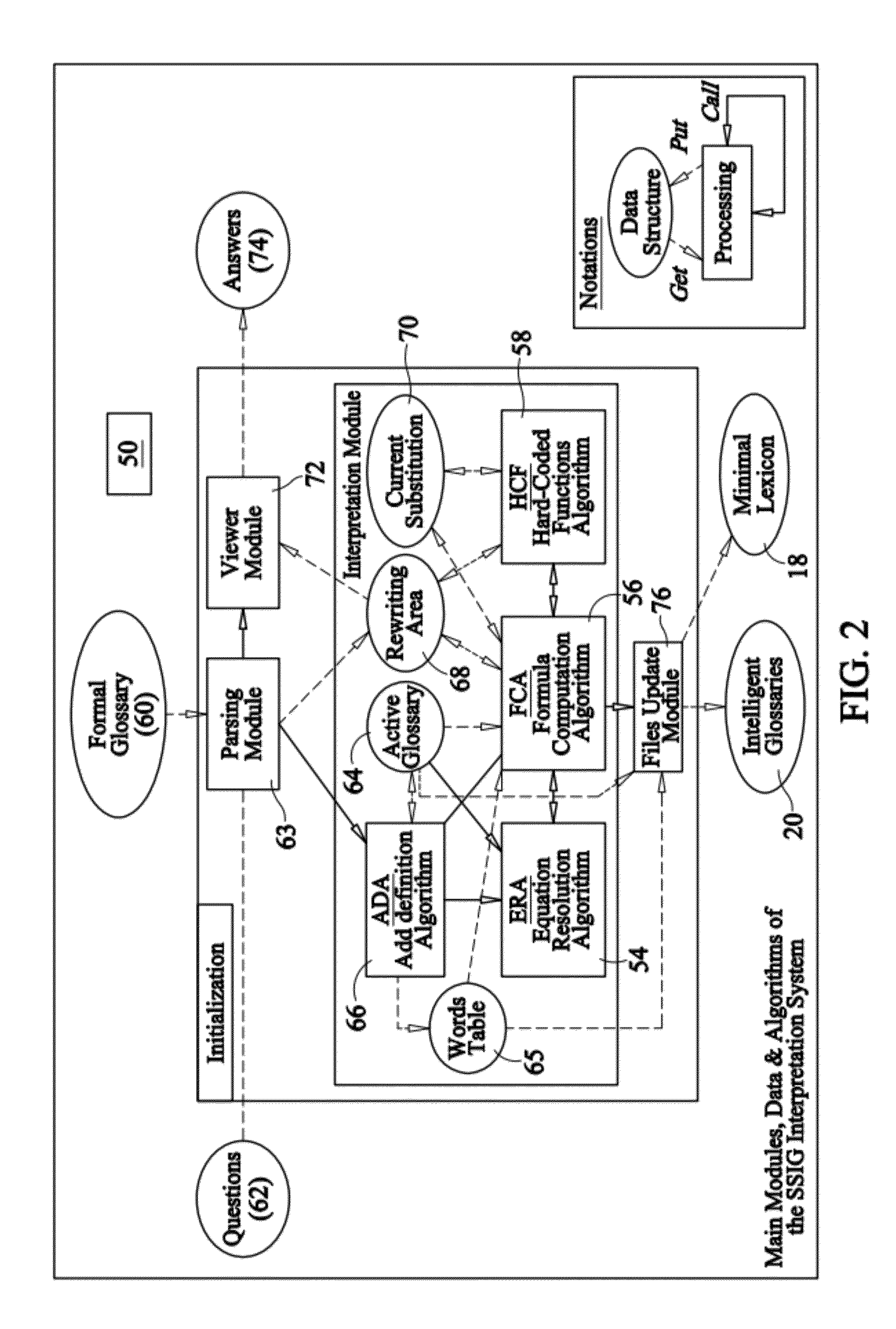Methods and systems for constructing intelligent glossaries from distinction-based reasoning
- Summary
- Abstract
- Description
- Claims
- Application Information
AI Technical Summary
Benefits of technology
Problems solved by technology
Method used
Image
Examples
case 1
[0391]FCA is used for applying glossaries to a formula, with different modes (either all undefined indications are changed to @ or all undefined indications remains “as is”); there are two possible cases to which this is applied:[0392] For a formula that is an expression, corresponding to a declarative sentence (a statement);[0393]Case 2. For a formula that is a term, corresponding to a naming sentence (for naming an object or a state).
[0394]In Case 1, the response of a glossary to a expression is the primary value obtained by applying the tree of all applicable definitions from glossaries of SSIG, to the sub-expressions of the expression; depending on the mode, FCA keeps the unresolved indications as is, instead of valuating them by @; this leads to a primary expression, containing only indications and primary symbols; otherwise the process stops when nothing but primary symbols remain: this is an arrangement. After being reduced by LoF, this arrangement becomes a primary value whi...
PUM
 Login to View More
Login to View More Abstract
Description
Claims
Application Information
 Login to View More
Login to View More - R&D
- Intellectual Property
- Life Sciences
- Materials
- Tech Scout
- Unparalleled Data Quality
- Higher Quality Content
- 60% Fewer Hallucinations
Browse by: Latest US Patents, China's latest patents, Technical Efficacy Thesaurus, Application Domain, Technology Topic, Popular Technical Reports.
© 2025 PatSnap. All rights reserved.Legal|Privacy policy|Modern Slavery Act Transparency Statement|Sitemap|About US| Contact US: help@patsnap.com



